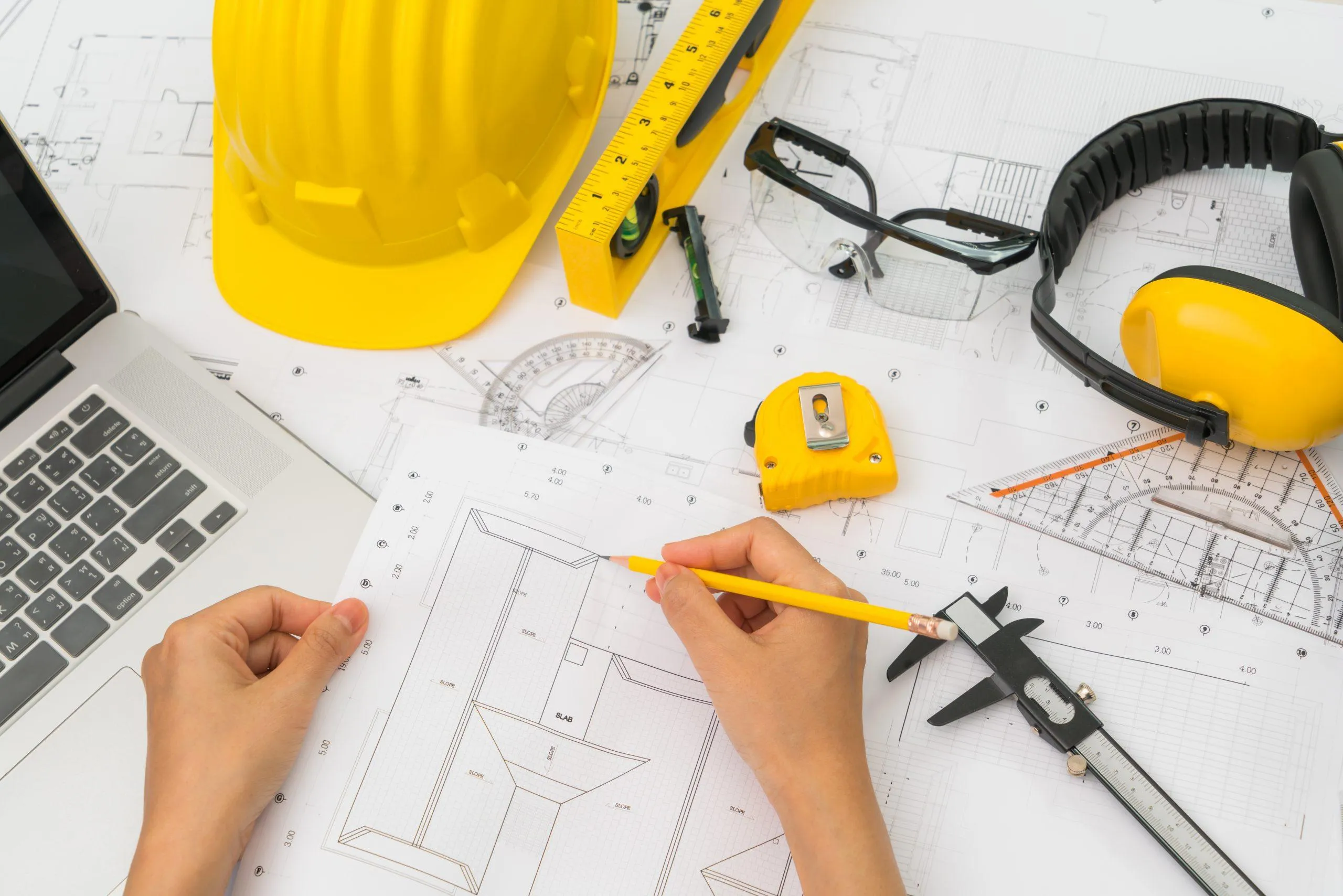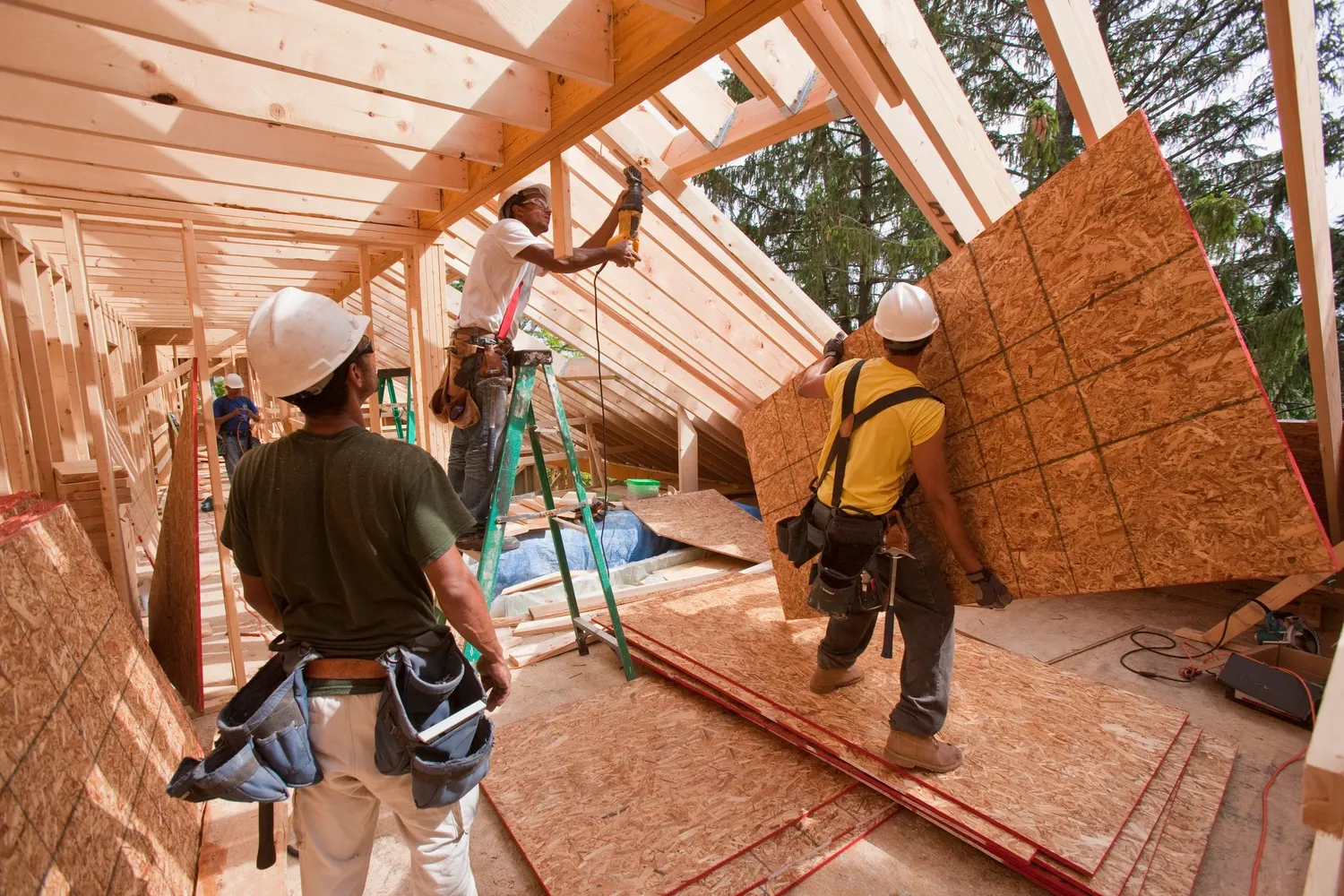Common Problems That Only a Residential Structural Engineer Can Solve
Is Your House Showing You Something? Pay attention to the symptoms.
Until it’s too late, you may not see signs of foundation damage or a possible sagging ceiling. Whether you’re remodeling, buying an outdated house or simply finding a problem, spotting when to bring someone in can help. The following blog will discuss only how a residential structural engineer can effectively fix and identify the main issues. If your house’s security, value and long-term health are essential to you, read this article you might pick up on a problem you missed.
Understanding the Role of a Residential Structural Engineer
Have you ever worried who to call if your ceiling lowers or your walls look abnormal? It’s important to choose a residential structural engineer not just any contractor. Thanks to these specialists, your home is safe and secure. They not only identify issues; they are skilled at explaining how your house is built, how it stands up under pressure and how it ages.
This type of structural engineer for residential homes is skilled at examining and constructing home structures that will not bend under weight, face harsh weather and comply with building standards. Apart from figuring out measurements, they ensure that remodeling your second floor won’t put your entire home at risk.
The truth is, more than 80% of failures in residential buildings can be stopped if engineering assessments are done before serious damage occurs. If you are remodeling, fixing or purchasing a house, a residential structural engineer checks, diagnoses and offers helpful advice for ensuring your house is safe.
Their job is to notice what the normal eye might miss such as soil changes below your foundation, hidden load-bearing structures or water damage over long periods. If these things are not done and little problems might end up being dangerous for people.
If you hear your home asking for help, act fast and get a licensed structural engineer for residential homes involved to defend your property, belongings and family.
Learn more about the important role of architectural design in ensuring structural safety and innovation
What Problems Can a Residential Structural Engineer Solve?
In this blog, we cover some key though easily missed issues that can impact residential properties. These problems could decrease your home’s stability and safety when left unattended. Whatever the reason, spotting these problems in your home becomes very important.
An experienced residential structural engineer can find, evaluate and fix these issues to prevent expensive damages in the future. These are the types of structural problems that homeowners see most frequently.
- Foundation cracks and settlement
- Load-bearing wall issues during renovations
- Water damage and structural rot
- Soil movement and home settling
- Sagging roofs and ceiling instability
- Renovations done without structural review
- Age-related wear in older homes
- Pre-purchase structural concerns
- Misaligned doors, sloping floors and wall cracks
All of these issues should be reviewed by an expert and we will cover how a structural engineer for residential homes helps fix them properly as this series continues.
Understand the role of comprehensive building drawings in preventing structural problems.
The Hidden Danger of Foundation Cracks
It’s only a tiny crack in the basement so what could really go wrong? It’s unfortunate that many times, significant foundation issues are what cause foundation cracks. An easy-to-miss hairline crack might mean that your home’s foundation is moving, settling or dwindling underneath you.
Over one-quarter of all homes in the U.S. have trouble with their foundations and many of these problems need urgent care from experts. According to the National Association of Home Builders such cracks can result in floors that are not level, doors and windows that won’t open widely and may even cause significant shifts in the building that partly endanger your home.
This is why bringing in a professional to assess the damage to your structure is important. A professional will consider the extent of the damage by determining the damage from the basement to the roofline. They analyze areas of stress, foundation movement patterns and how water and soil affect the house.
When problems are discovered then home structural engineer services for your house will intervene. Depending on what is needed, these experts will reinforce the foundation, correct soil problems or create long-term ways to prevent more harm. They make sure your home is built not just to stand but to stand firm.
Bottom line? Fix a little crack before it becomes a financial and safety problem. Letting a structural engineer examine your foundation may mean avoiding a complete overhaul.
Explore advanced 3D modeling features for better home designs.
Common Structural Problems and the Role of a Residential Structural Engineer
| Structural Problem | Visible Signs | Potential Risks | Solution Provided By | Keywords Used |
| Foundation Cracks | Wall/floor cracks, uneven floors | Wall collapse, water infiltration | Residential Structural Engineer | Foundation cracks and structural problems in homes |
| Load-Bearing Wall Issues | Cracks above doors, sagging ceiling | Partial collapse, instability | Structural Engineer for Residential Homes | Load-bearing wall issues, home renovation structural analysis |
| Water Damage & Rot | Mold, musty smell, soft wood areas | Wood decay, pest infestation | Home Structural Engineer Services | Structural damage assessment, engineering solutions for home safety |
| Soil Movement & Settling | Sloping floors, sticking doors/windows | Foundation shift, structural instability | Residential Structural Engineer | Building stability inspection, foundation cracks |
| Roof/Ceiling Sagging | Visible sag in roofline, cracks in ceiling | Roof collapse, weather exposure | Structural Engineer for Residential | Residential structural engineering, roof structure issues |
| Renovation Without Review | Removed walls, unsupported spans | Total structural failure | Residential Structural Engineer Consultation | Home renovation structural analysis, structural engineer for residential |
| Aging Home Issues | General wear, multiple cracks | Increased maintenance and repair costs | Building Stability Inspection | Structural problems in homes, structural damage assessment |
| Pre-Purchase Structural Check | Buying older homes or properties with visible flaws | Post-sale repair costs, insurance issues | Residential Structural Engineering Team | Home structural engineer services, residential structural engineer |
Load-Bearing Wall Issues and Why DIY Renovations Can Be Risky
The wall is in the way so let’s just get rid of it!
Although it is common to hear this in DIY home renovation, many do not realize that removing the incorrect wall can damage more than your plans for décor. A mistake during home remodeling, one that’s dangerous and usually costly, is forgetting about the load-bearing wall.
Not removing walls properly is responsible for many examples of structural failure in homes, this indicates national building safety reports. Wall supports aren’t just pleasing to the eye—they keep the weight of your home above them. Changing things without professional input may result in cracks, sagging in the ceiling or worse, part of the house collapsing.
So, hiring residential structural engineers for advice is necessary before starting structural work. A qualified engineer checks to see which walls are important for the building and gives advice on safe changes and reinforcements for your renovation project.
Your Engineering solutions for home safety will more than just obtain approvals; they should also plan how your house carries weight, enhance reinforced areas and abide by your local building regulations. Although it might look like we’re slowing matters, the goal is to guarantee the project doesn’t fail.
Interested in opening your space or making more rooms? Talk to a professional before you begin. Today’s engineering tips could help keep your house safe and save money.
Find out how professional engineering solutions ensure your home renovation complies with regulations.
Water Damage and Structural Rot: Silent Destroyers
It’s just a little leak—nothing serious.
Something many homeowners have said at the end, sometimes with regret. A drop that seems insignificant can, quietly, create significant problems in your home structure. Water in your home flowing inside the walls and under floors is silent and gradually weakens your home’s wood and stability.
There are on average 14,000 U.S. homes each day that suffer water damage with a portion of those cases requiring major repairs to the home. According to the Insurance Information Institute, the reason is not called into doubt. Too much moisture leads to discoloration on drywall, but it can also get into beams, weaken the core and result in mold and the beginnings of decay.
This situation makes it key to conducting a structural damage inspection. Because of their training, licensed structural engineers can recognize hidden damage in soft areas of flooring or beams that are damaged by moisture. They can find issues that most people and even professionals will not recognize using special equipment and knowledge.
After the problem is identified, home structural engineer services provide a solution. If you have damaged wood, weak areas in your home or drainage problems, these specialists offer fixes that help and make you feel confident again.
Remember: Water may seem calm but the losses it can cause are very clear. It’s better to act before your floors droop or your walls bulge. You can save yourself from big repair bills by checking now.
Foundation Settling and Soil Movement
Why does my floor suddenly feel like it’s slanting?
If you ever find your doors sticking, notice cracks above your windows or see uneven floors then the problem may not be your house it may be due to changes in the ground below. Although settling of foundations and changed soil are ordinary events if they continue unchecked they can cause big trouble for your home structure.
As the soil underneath a home gets older, it can change shape and move which affects the entire building. These changes might be minor initially, but they eventually put your home’s stability and safety at risk. That’s why it’s vital to have a residential structural engineer evaluate the extent of movement and recommend the right solutions.
Here’s a quick checklist of common warning signs that your foundation may be settling:
- Cracks above windows or door frames
- Sloping or uneven floors
- Doors and windows that stick or won’t close properly
- Gaps are forming between walls and ceilings.
- Popping or cracking noises in the structure
A detailed building stability inspection can pinpoint whether these signs are minor nuisances or indicators of serious structural problems. A structural engineer will use laser leveling to check settling and fix it, analyze soil samples and calculate loads.
Things may be shaky but that doesn’t have to impact your house. A professional near you helps prevent damage, offering more secure peace of mind.
Learn about the importance of professional structural inspections for home safety.
Structural Inspections Before Buying or Renovating
The house looks great from the outside. Do we really need an inspection?
Yes, you absolutely do. You do need to follow them. That new coat of paint or updated kitchen may not reveal existing structural problems that a professional can find. Before you finalize your contract or start construction then investing in a building stability inspection is a good idea to avoid later trouble.
Many professionals suggest a structural analysis of a home renovation especially if the property is over 30 years old. Why? Sometimes time, weather or changes in the building have caused foundations, walls or roof supports to weaken.
A structural engineer for residential homes does much more than make a general inspection of the property. Professionals check walls that support weight, inspect the foundation, look for water problems and determine if anything in the wiring or structure could be a safety hazard. Their advice can separate a fantastic home from one that will ruin your bank account.
Suppose you’re choosing an older house or starting an extensive renovation. In that case, it’s necessary to get a structural inspection, not just preferable. It allows you to decide wisely, work out better contracts, and avoid unexpected pitfalls that might destroy your budget.
Bottom line? Avoid being surprised by issues you can’t see inside the building. Make sure to hire a professional before you start or purchase and you’ll have peace of mind with your construction work.
When Roof and Ceiling Sagging Signals Trouble
Is that sag in my ceiling typical or should I be worried?
A drooping roof is more than simply an ugly roof or ceiling; it’s a warning indicator that needs to be fixed immediately. If left unchecked, this issue usually caused by faulty trusses or overloaded rafters can quickly worsen and pose a significant safety danger.
Roofs carry a lot of weight from shingles and insulation to snow and wind loads. As structural elements decay or collapse, the roofline starts to droop and cracks in the wall or ceiling may appear. This is a clear sign that your home’s stability is compromised.
Only a licensed residential structural engineer can determine the root cause of drooping roofs. They evaluate the distribution of loads, check the condition of the rafters and trusses, and determine whether the problem is from subpar design, water damage, or material failure.
After identification, the engineer will offer customized technical engineering solutions for home safety, including strengthening existing structures or installing new support systems. These repairs protect your family and investment by ensuring your roof is secure and strong.
Take note of the sag. It’s a subconscious signal that your home needs expert care right away. With the correct information, sagging roofs can be repaired before they become costly disasters.
Technology in Structural Engineering is Smarter And Safer Homes
What if your home could tell you when it needs help?
Because of advances in technology, that future won’t stay far away for long. Today, a construction firm intends to use technology like 3D modeling, structural sensors and Building Information Modeling (BIM) to revolutionize residential structural engineering making homes safer and inspections more accurate.
In the past, we counted on only visual inspections but today that’s not enough. Thanks to 3D modeling, engineers are now able to examine every support in your home on the computer, without needing to access the actual structure. Sensors built into crucial components always check stress, movement, moisture and alert homeowners or engineers in advance when any problem is found.
Over 60% of construction companies now depend on technology to improve how buildings are analyzed and the risks they might face. Consequently, both home inspections, designs and upkeep are being improved, resulting in homes that are both safe and smart.
Using these new advancements, residential structural engineers help you keep your home in good condition for years. Technology is not only changing construction—it’s improving how we keep our most significant asset safe.
The future of home safety has arrived, and it’s more advanced than before.
Real-Life Case Studies: Before and After Structural Solutions
Seeing is believing. It is clear from real case studies that professionals help efficiently solve issues with a home’s structure. Now, we’ll look at some cases where structural damage assessment and effective engineering solutions for home safety ideas changed everything.
A homeowner discovered that cracks in the basement wall were increasing and that floors throughout the main level were becoming uneven. Foundation settlement was found to be significant when the building’s structure was carefully assessed. The home was made safe and more valuable again thanks to a repair plan that included underpinning and stabilization of the foundation.
Today, the floors are even and the crack is gone. Another time, a family ended up with sagging ceilings and cold rooms after an amateur do-it-yourself restoration removed a key supporting wall. A licensed residential structural engineer was brought in to carefully check the building and design a replacement steel beam to support it. The work on the home improved the sagging area and prevented it from collapsing, keeping the family safe.
Structural engineers can make hazardous settings into safe and lasting houses. Examples with real before-and-after photos and testimonials confirm the benefits of expert care.
If you’re facing structural challenges, remember: expert assistance turns those problems into fixes so your property will last longer.
For a deeper understanding of architectural designs and their impact on structural safety, explore our comprehensive guide on the role of architecture design in smart city projects
Before:
A homeowner in Ohio noticed growing wall cracks and a little dip in the living room floor. Doors stopped closing properly and the flooring became noticeably uneven over time. An inspection revealed foundation flaws and soil displacement that had been disregarded for years.
After:
Our team installed foundation underpinning and joist reinforcing following a comprehensive structural damage evaluation. The result? Floors were levelled, cracks were repaired and stability was restored in three weeks.
Home structural problems have been resolved.
- Structural problems in homesresolved
- Cost-effective, long-lasting engineering solutions for home safety
- Home value increased after repairs
We didn’t realize how serious it was until CAD Drafter showed us the whole picture. Now our home feels safe again. – Homeowner Testimonial (Sami Steve)
Cost of Ignoring Structural Issues
A small crack today could become a costly disaster tomorrow. Waiting to bring in a residential structural engineer can lead to simple problems becoming expensive for your home. A neglected minor fix for $1,000 can soon lead to $10,000 or more in costs.
HomeAdvisor estimates that fixing major structural problems costs $5,000 to $30,000. They show why finding cancer early and getting help from a doctor is so important.
Working with a home structural engineer services catches any problems early on. It shows you the most secure and cost-effective solutions. Postponing repairs often causes the situation to get worse, with foundation cracks widening, important walls losing strength and water wreaking additional damage, so fixing these problems becomes very costly.
“Investing in a professional assessment today saves you thousands tomorrow.” It’s a simple thing you can do to look after your home, your savings and your peace of mind.
Benefits of Hiring a Structural Engineer
- Expert Structural Damage Assessment:A residential structural engineer is skilled at finding cracks in the foundation, any concerns with load-bearing walls as well as soft or rotten wood in buildings that is typically overlooked by others.
- Early Detection Saves Money:Homes inspected early by structural engineers can reduce costly repairs by up to 40%. It prevents minor issues from turning into major disasters.
- Peace of Mind and Safety:You can be certain that a licensed professional’s inspection makes your home safer and more secure.
- Guidance on Safe Renovations:Whether you’re updating or building something new, a structural engineer helps prevent damage to your home’s structure.
- Protect Your Investment:Structural engineers keep your home’s worth high by avoiding costly and harmful structural problems.
- Support When Buying Older Homes:Having your home checked and discussed by a specialist reveals any unseen issues that may help you when you negotiate about repairs or the price.
- Compliance with Building Codes:Local building regulations are followed by structural engineers, so you don’t have to worry about problems with government or insurance clearance.
- Innovative, Long-Term Solutions:Instead of quick fixes, they offer sustainable engineering solutions customized to your home’s unique needs.
“Investing in a structural engineer is investing in the future safety and value of your home.”
Conclusion: Protect Your Home with Expert Structural Engineering
Your home is more than just a place to live. It’s also a significant investment and a safe space for your family. Taking care of structural problems in your house quickly, supported by an expert residential structural engineer helps guarantee your home stays safe, stable and comfortable for many years. To avoid major repairs and feel secure, you should rely on skilled advice for every part of your home, including foundations and walls.
Don’t wait for minor issues to turn into expensive disasters. When you realize your floors are tilted, your ceiling is drooping or you’re finding cracks in your walls, it is essential to hire a structural engineer.
Take the First Step Toward a Safer, Stronger Home
Is your home trying to tell you something?
These signs shouldn’t be ignored whether it’s sloping floors, hairline cracks or sagging ceilings. At CAD Drafter, we specialize in helping homeowners like you protect what matters most.
- Get expert insights from a residential structural engineer
- Receive a thorough structural damage assessment
- Find customized and cost-effective solutions that last
Your home deserves expert care; don’t leave its safety to chance.
Let’s ensure your home stays stable, secure and structurally sound for years.
FAQs
What are the main tasks carried out by a residential structural engineer?
A residential structural engineer looks into and fixes issues related to the strength and stability of home structures to meet building rules.
How do I discover if there are cracks in the foundation of my home?
Often, uneven places in the house, cracks on ceilings or walls and issues with door or window closure are clear signs of settling. Should you spot these, you should promptly book an assessment from us.
What are the reasons I chose you for my residential renovation work?
Changing important structural elements or load-bearing walls without appropriate guidance can end in serious damage. We help prevent costly home damage by figuring out better ways to improve home safety.
How often should I get a building stability inspection?
It’s recommended to have a professional inspection every few years especially for homes over 30 years old or if you notice signs like sagging ceilings or cracks. Regular inspections help catch problems early.
Which technologies are used in today’s residential structural engineering?
Our construction firms now use advanced tools like 3D modeling, structural sensors and Building Information Modeling (BIM) to perform more accurate and efficient inspections.
What are the expenses if I don’t address any structural issues?
Letting minor problems go unresolved can result in major repairs that cost you anywhere from $5,000 to $30,000 or more. Early assessment and repairs by our home structural engineer services save money and stress.
Can a structural engineer give advice before purchasing an older home?
Absolutely! A home renovation structural analysis before you buy can help you discover hidden problems and get better conditions in the sale.







